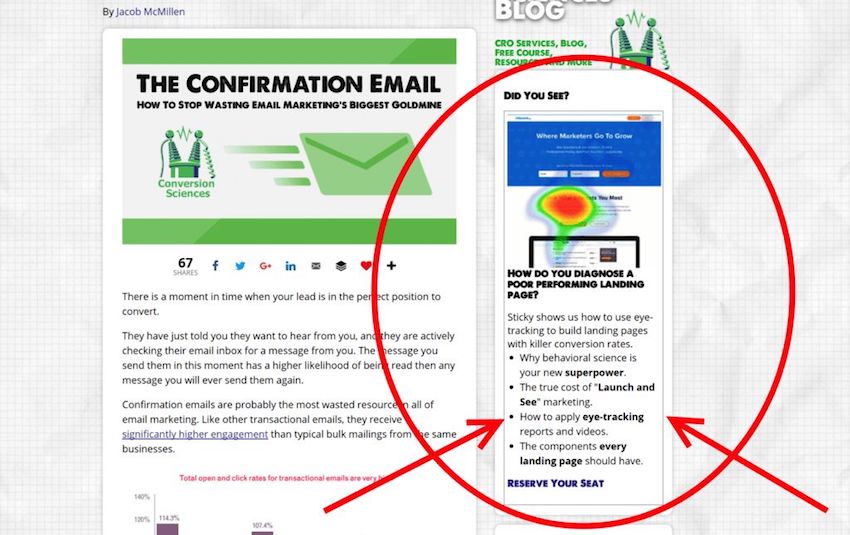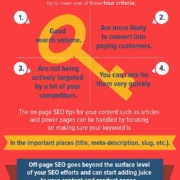How To Persuade People Without Trying: 8 Ways To Be Naturally Influential
When you know how to persuade people, you gain control of your personal and business destiny. Here are 8 ways to be more influential.
We all want to be influential.
We want our words to carry weight. We want our presence to be felt. We want our existence to be significant.
And we want it to be natural.
We don’t want to be pushy or salesy. We don’t want to be overly self-promotional.
We just want to be persuasive.
Today, we’re going to learn how to persuade people without trying. We’re going to look at 8 ways to be naturally influential no matter who we’re with or what we’re doing.
We’ll be analyzing these both from a personal and a marketing perspective, but at the end of the day, they are highly effective in any sort of interpersonal engagement, from networking, to making new friends, to managing complex family relationships… basically any scenario where there are two or more people involved.
Let’s get started.
Related Reading: 21 Fascinating Persuasion Techniques for Conversion Optimization
1. Use Mirroring To Establish Subconscious Agreement
One of the quickest and easiest ways to establish a position of influence with an individual is mirroring.
Mirroring is the act of copying a person’s body language, tone, volume, and rate of speech. It’s essentially just reflecting the other person’s behavior back to them, like a mirror reflects an image.
According to studies by Stanford University Professor Jeremy Bailenson and his colleague Dr. Nick Yee, the act of mirroring one’s behavior demonstrated an increase in social influence over the person they were mimicking. In the studies conducted, they found that individuals who mirrored were more persuasive and were rated more positively than those who didn’t mirror.
In the context of typical interpersonal connections, mirroring a person’s behavior tends to put them at ease and can significantly increase the chance of building rapport with the individual. It can put people at ease, break through subconscious resistance, encourage trust, and more.
Like most items we’ll discuss today, mirroring will need to be consciously learned until it become a subconscious part of how you interact with people. The simplest way to begin is to match the person’s stance and conversational tempo. When practicing, a good rule of thumb is to wait 5-10 seconds before attempting to mirror someone’s stance, so as not to be too obvious.
On a note of caution, mirroring can backfire if you are mirroring highly negative postures like crossing both your arms and your legs or turning your upper body away from them.
Working on an online campaign? Check out How to Persuade Landing Page Visitors to Convert
2. Interweave Pauses & Silences To Dictate Listener Rhythm
Silence makes many people uncomfortable. There is no denying that.
For a lot of people silence is so powerful that they cannot resist filling it. Filling the void for them almost becomes second nature.
Naturally influential people are aware of the effect silence has on people and use it as a persuasive tool in everyday conversation.
From a strategic perspective, they understand that whoever fills the void of silence is more likely to disclose too much information, give clues to the influencer, or even make a mistake that might advantage the listener.
From perhaps a less calculated perspective, people who aren’t afraid of silence – who are deliberate and unhurried in their actions and conversations – elicit a feeling of control and confidence. It can be a bit of chicken and egg situation, but even if you don’t feel confident, you can project confidence by being patient in your discourse.
Additional advantages to silence and pauses include a better ability to listen and process information, a chance to decide on the most articulate and effective way to communicate a thought, the ability to better understand the speaker and make a more personal connection.
The bottom line here is that silence is powerful, and if you want to learn how to persuade people without needing to try, mastering the art of silence should be at the top of your priority list.
3. Surround Yourself With Other Influential People
Jim Rohn famously said, “You are the average of the five people you most associate with”.
This saying aligns with the law of averages, which is a theory that “the result of any given situation will be the average of all outcomes.”
While on a daily basis we may interact with lots of people, in reality very few of them have a great impact on us. Very few people actually influence our decisions the way we think.
When you surround yourself with the people you aspire to learn from and emulate, you will naturally rise to their level. Spending more time with influential people will put you in a position to absorb their knowledge, mannerisms, and general outlook on life, all of which contributes significantly to their success.
Influential people aren’t afraid to reach out to other influential people for help and for advice. They understand the value of connecting with social influencers, successful entrepreneurs, and connectors, as Malcolm Gladwell on “Are You a Connector”.
We all get to choose who we spend our time with, and one of the best ways to become naturally influential is to spend time around naturally influential people.
4. Encourage People To Talk About Themselves
People love talking about themselves.
Renowned Princeton Psychologist Diana Tamir found in one study that between 30-40% of our speech is focused solely on ourselves. In that same study Tamir noted that when people talked about themselves, their brain scan showed signs of activity in the areas of the brain most closely linked to motivation and value. That same area of the brain associated with talking about oneself is also associated with the thrills of sex, money, food, and drug use.
When you are meeting someone new, the best way to establish rapport is to encourage them to do what they already want to do: talk about themselves.
Start with a bit of small talk but then ask or two meaningful questions and really listen to the answer. Turn the answer into a follow up question that signals to the speaker you find their comments interesting and encourages them to go deeper.
Not only will the speaker feel valued by your attention and inquiries, but they will also give you a broader look into who they are, provide you with numerous opportunities to establish common ground and make a personal connection.
If you want to gauge how well you do this already, think back on a recent conversation and determine what percentage of the time you spent speaking versus listening. The more time you spend listening, the more influence you tend to have on the person involved.
Some people are quiet or passive and let others do the talking because they aren’t confident or simply have nothing to say. This, of course, is NOT what I’m talking about.
What I’m talking about is intentional and incredibly active. By encouraging others to speak about themselves, you can naturally make them gravitate towards you, regardless of the context.
5. How to Persuade Someone: Give Something Before You Ask For Anything
You’re probably familiar with the concept of reciprocity.
When you give someone something, it encourages them to return the favor and give something to you as well. In the marketing world, the most common example of this in action is the lead magnet:
But reciprocity isn’t limited to marketing funnels, and it can be used to make you a naturally influential person in every context.
They key is simply to be a generous person. What you are generous with is up to you. It could be your time. It could be your money. It could be your influence. People want to help those who are helpful to them, and regardless of what you give, when you are a giving person, you naturally become an influential person.
Stop right now and think of the most influential people in your life. I guarantee you aren’t thinking of “influencers” you’ve never met. You’re thinking of people have given a lot to you personally, and the reality is that in a world of increasingly “remote” people, the threshold for what constitutes personal generosity gets lower and lower.
If you’re skeptical, run an experiment. Spend a month going out of your way to be generous, and see what types of doors it opens and relationships it builds.
6. Understand the Difference Between Persuasion and Negotiation
Persuasion and negotiation are often thrown into the same category. This is a mistake. Negotiation and persuasion are nearly exact opposites and knowing the difference can naturally make you more persuasive.
- Negotiation by design involves getting straight to the point and often includes making concessions to the point where both parties have a similar benefit.
- Persuasion on the other hand is slow and subtle. Typically, persuasion makes no concessions and requires a bit of finesse.
Unlike negotiation, you can’t jump right in. When persuading someone you are likely going against core beliefs and values that have been ingrained for many years. Persuasion is playing the long game. The object is to chip away at those footholds and open the other person up to the possibility of being influenced by you.
Unlike persuasion, negotiation can often be done in one sitting, sometimes in less than an hour. One person will typically take the lead and say something like “we need to work this out” or “what would it take to resolve this?”. From there, concessions are usually made until both parties are satisfied.
90% of concession making is done in the last 10% of time spent negotiating.
Typically this happens because of a time constraint on one party.
An example of this might be negotiating with a car salesman at the end of the month. The buyer may not be under pressure to buy today but the salesman may not get his monthly bonus unless he sells you that car today. The best thing the buyer can do in this example is to slow things down. If the buyer is calm, deliberate, and patient, they will likely give you a much greater deal then if they pushed hard immediately.
7. How to Persuade Someone to Buy Something: Use Scarcity To Prompt Immediate Action
Often times you can speed up the persuasion process by adding an element of scarcity to your offer or pitch. Make it crystal clear to everyone that your product is not only valuable but also rare and uncommon.
Marketers know the value of listing not just what their product or service does but also how it benefits the end buyer. Where they tend to fall short is in explaining what the buyer or user stands to lose if they don’t purchase your product or service.
Not only does this help differentiate among everyone else vying for customer attention but it also adds an element of scarcity or #FOMO to the offer.
Some examples of scarcity are:
- Black Friday sales. People understand they only have short amount of time to cash in on these uncommonly big discounts on their favorite items.
- Displaying a limited amount of stock on your website. Amazon lists “Only 4 left in stock” which lights a fire under the buyer to jump on it now
Moderation is the key when applying scarcity to your process. If for example you own an eCommerce store and are constantly running “Today Only!” specials than your customers won’t feel compelled to purchase because they know another sale is only right around the corner.
To apply this outside the marketing world, think about the people you know who are super busy and how meaningful it is when they choose to make room for you in their schedule.
8. Get Rejected Purposely To Acquire What You Really Want
Getting hung up on or having a door slammed in your face is never fun. However, that failure can be used to leverage an ulterior motive.
This compliance method is aptly named the Door-In-The-Face (DITF) technique and is a well known method used to influence others to get what you really want.
How it works is the persuader will attempt to convince the respondent to get something that they know the respondent will likely say no to (slamming the door in their face). Then the persuader will come right out immediately and ask for something more reasonable. The reasonable request being what they really wanted all along.
This technique works well when followed in this sequence because in isolation the second request (what they really want) has a higher chance of being turned down. But combined with the higher request it seems as though the persuader is making concessions so the respondent will likely feel inclined to do so also.
In a study conducted by Dr. Alexander Pascual, a professor at the University of Bordeaux, several dozen men and women were split into groups at a bar. In one group a female subject asked a male subject to buy her a drink because her boyfriend left without paying the bill.
After the male subject refused, the female subject requested he give her a few coins instead.
A second group had a female subject ask for a few coins without initially asking them to buy her a drink. The results of this study showed a dramatic increase in compliance using the door-in-the-face technique.
Not only did the DITF technique increase compliance but it also increased the average amount of the donation.
How to Persuade People: Conclusion
If you want to learn how to persuade people, you need to understand what makes people influential.
Hopefully, our discussion today has given you some pointers and strategies for become a naturally influential person. It starts at a conscious level, but the more you put these strategies in action, the more they will become part of who you are.
Now it’s your turn to share. Why common traits do you see in influential people, and which ones have you attempted yourself?
Let me know in the comments!
- 10 Proven Ways To Immediately Optimize Your Pricing Page - October 4, 2017
- 5 Essential Qualities of a High-Converting Promotional Video - May 26, 2017
- How To Persuade People Without Trying: 8 Ways To Be Naturally Influential - April 18, 2017
















Thanks for the great article. Going to try the door-in-the-face technique. Never really tried it myself but have seens others use it successfully, now I think about it.